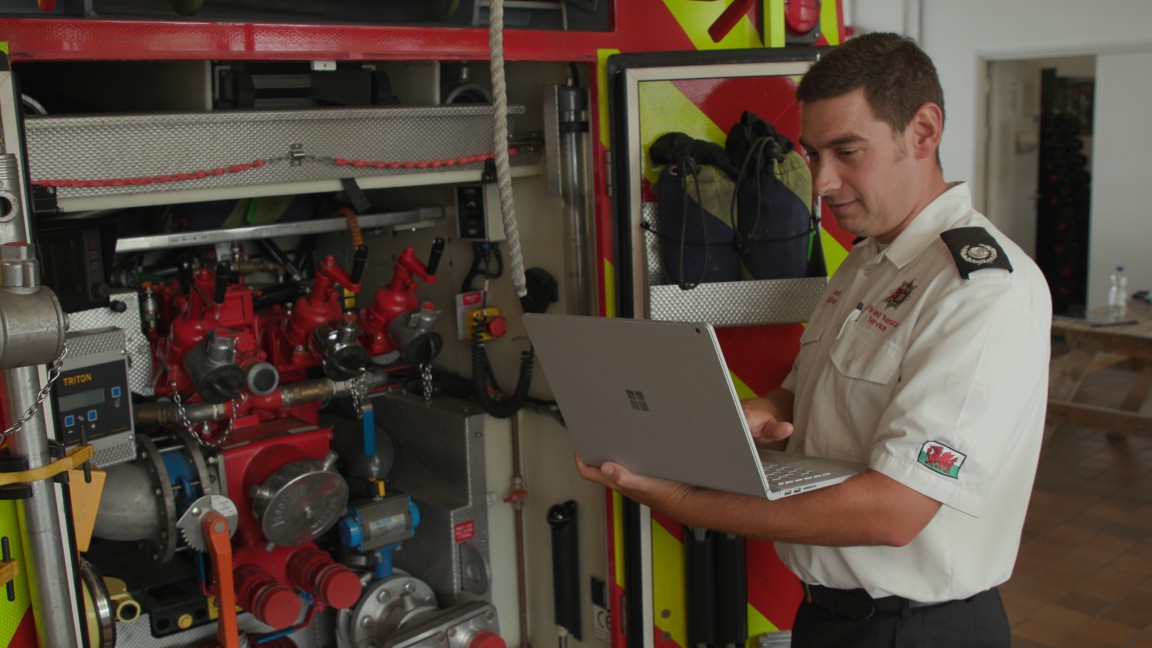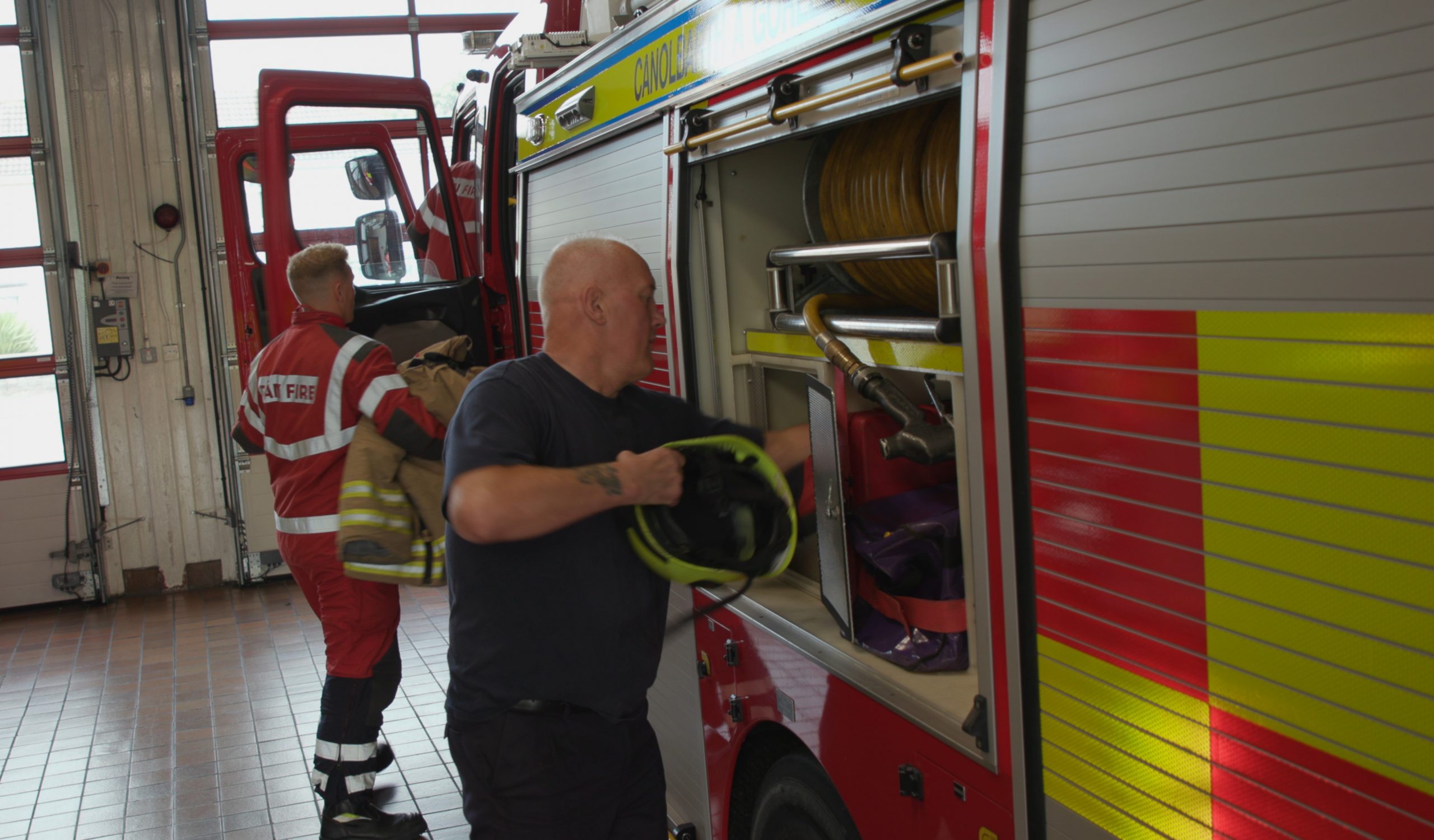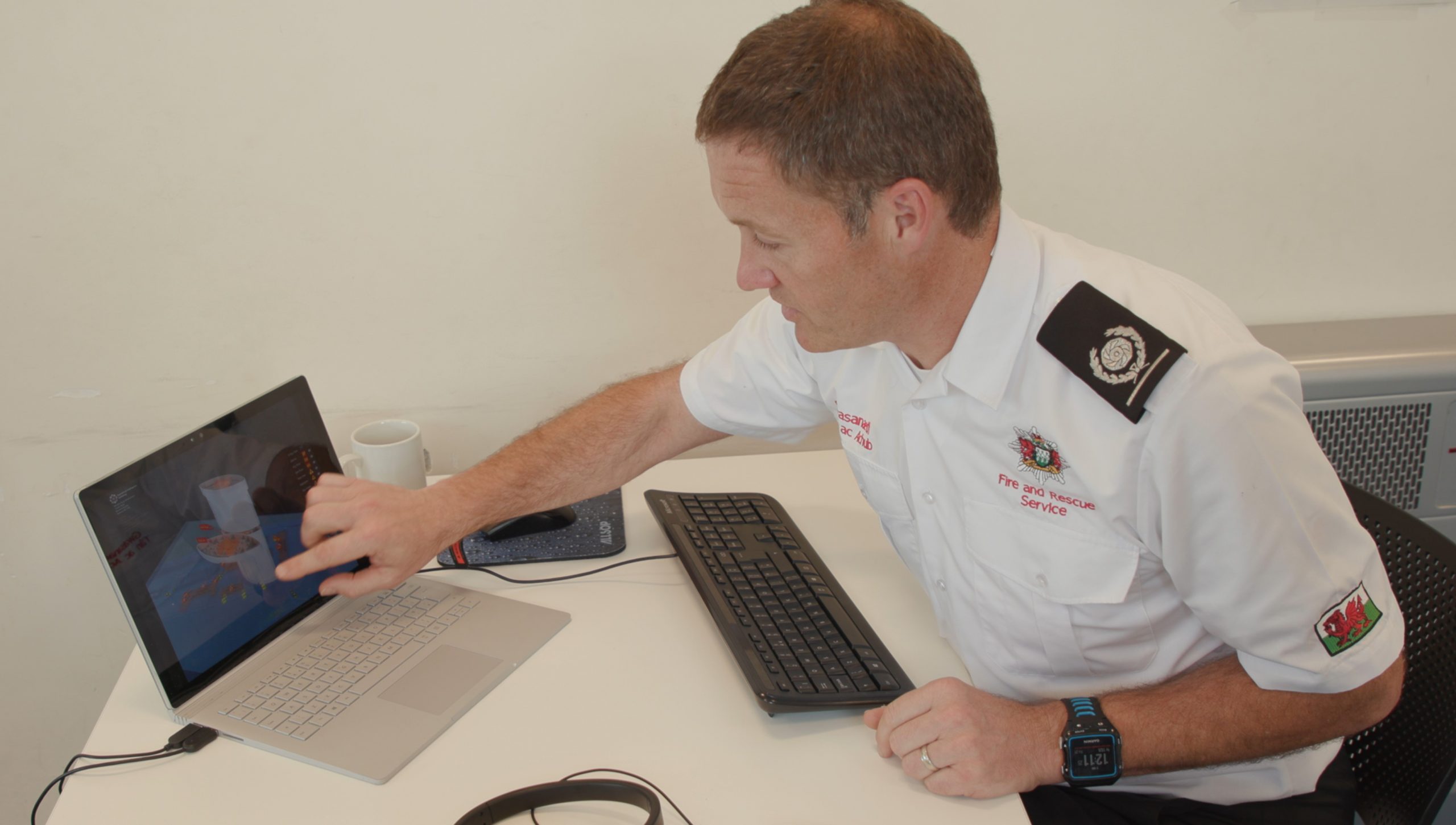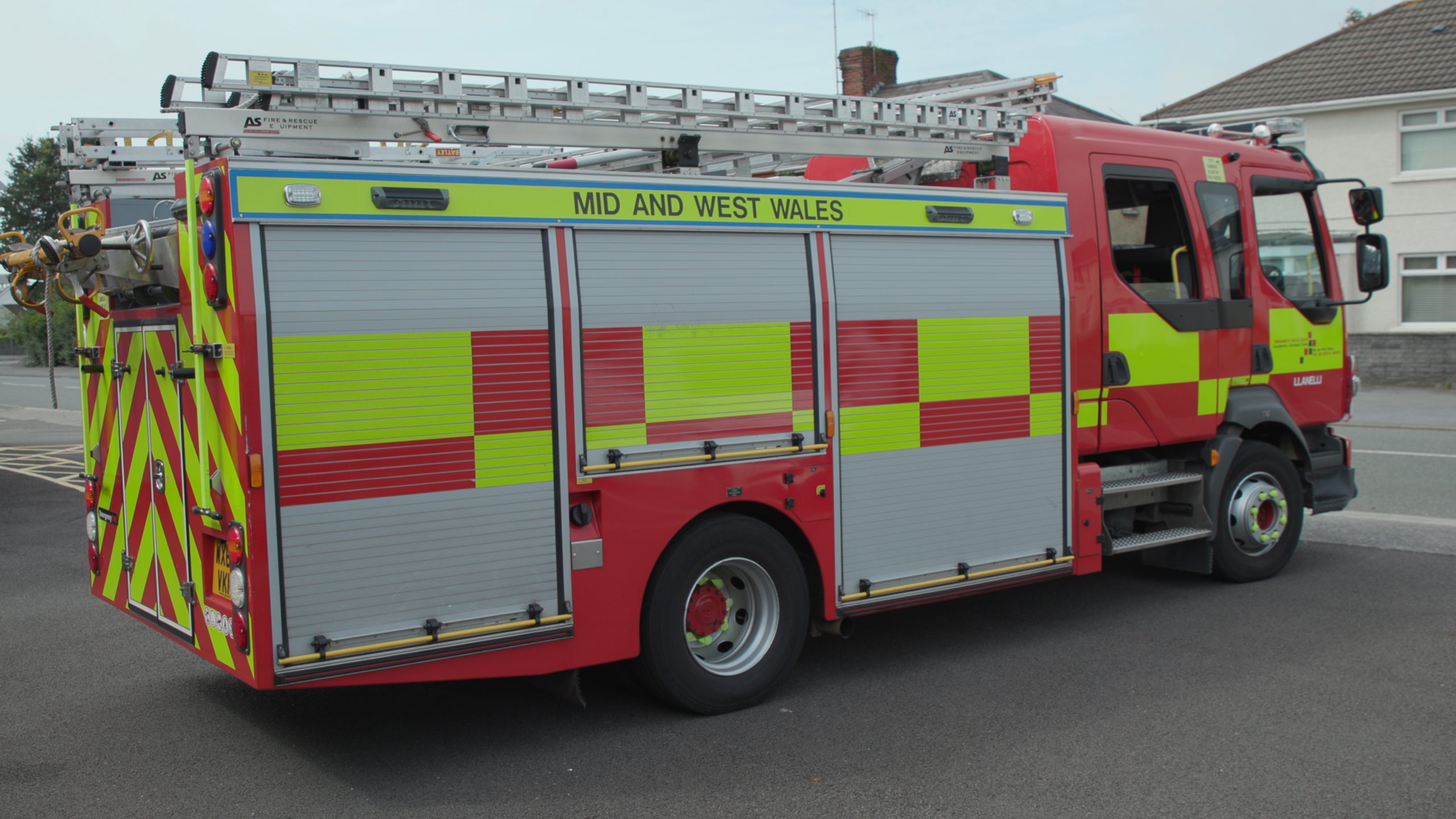
Microsoft Stories podcast: episode 9 – Mid and West Wales Fire and Rescue Service
Hello and welcome to Microsoft Stories, a new podcast about technology and innovation.
In this episode we focus on Mid and West Wales Fire and Rescue Service, one of the largest fire services in the UK. It looks after 12,000 square kilometres that includes numerous mountains and 650 kilometres of coastline. It’s also an organisation steeped in tradition. So when Chris Davies became Chief Fire Officer, he made it his mission to drag it into the 21st century. Now, the firefighters are using Microsoft Surface devices to help them free people trapped in car accidents, and HoloLens to provide remote training.
You will hear from Chris in this podcast, as well as Ryan Lewis, Microsoft’s National Technology Strategist for all the public sector organisations in Wales, about how the country is increasingly embracing digital transformation.
Click the play button and join us on our journey.
Click here to visit our Podcast page. Alternatively, you can listen on Apple Podcasts or Spotify.
Transcript of this episode
MUSIC INTRO
Hi, I’m Andy Trotman, Head of News at Microsoft UK. Welcome to Microsoft Stories – a new podcast looking at technology and the people who use it.
In this series, I’m trying to answer the question: what is innovation? It means different things to different people. Innovation can be as simple as adding an eraser to the end of a pencil or as complex as sending people to the Moon.
What does it mean to be innovative? How do you know you’re being innovative? Along my journey, I meet people using technology in amazing ways, and discover what innovation means to them.
Join me on my journey.
SOUND OF FIRE ENGINE SIREN
It’s Thursday morning, and the firefighters at Llanelli Fire Station are taking part in a training exercise involving a car accident.
If this was a real emergency, the occupants of the vehicle may be trapped, so every second counts for the rescue team. A couple of the firefighters in the fire engine are passing round a Microsoft Surface Go, which is displaying a diagram of a Ford Fiesta. The screen shows them the most effective places to cut if they need to remove the roof of the car, and exactly where any airbags are located. Airbags that haven’t gone off can be very dangerous for fire crews responding to a crash.
The technology ensures that the fire service is ready to act as soon as they arrive on the scene. That’s thanks to Chris Davies, Chief Fire Officer at Mid and West Wales Fire and Rescue Service, who has been driving a programme of innovation for the past six years.
CHRIS: So one of the visions that I had when I got to Chief was that I wanted to drag the fire service into the 21st century. It’s only recently that we stopped having physical map books in our fire engines of the road network. I think there’s a huge opportunity for the UK Fire and Rescue Service to adopt technology much more than we currently do.
Mid and West Fire and Rescue Service is one of the largest fire services in the UK, looking after 12,000 square kilometres that includes numerous mountains and 650 kilometres of coastline. That presents unique challenges for the 1,400 staff employed in 58 fire stations across Carmarthenshire, Ceredigion, Neath Port Talbot, Pembrokeshire, Powys and Swansea.
When challenges present themselves, innovation is never far behind. Here’s Chris again on how his Fire Service is using drones.
CHRIS: We’re using drone technology, which has transformed our command and control. So, simplistically, we put a drone up in the sky when there’s a large mountain fire and we no longer have to have 100 firefighters on the mountain at risk. We can identify where the seat of fire is and direct the firefighters to that area.
Chris talked about how using technology to protect firefighters and keep them safe was just as important as using it to help members of the public in need. In fact, it’s all part of the same innovation journey that the Mid and West Wales Fire Service is on, because you need that single-minded approach to using technology to improve how you work. As an organisation, you either commit to innovating, or you don’t. To get the full benefits of tech, it’s either all or nothing.
CHRIS: There has to be a clear strategy and there has to be a vision of where, as head of the organisation, I want to take the organisation so that everybody within it understands where we want to go and what we want to happen in the future. But certainly, innovation for me, on a personal level, simplistically, means making us far more efficient and far more effective.
The innovation journey that Chris wants to take his Fire Service on isn’t an easy one. These days, we hear a lot about businesses born “in the cloud”, but what if you’re trying to change a public sector organisation with a history and traditions stretching back more than 100 years? How do you introduce innovation into that environment and, more importantly, how do you get people to accept it?
CHRIS: The Fire and Rescue Service is steeped in culture. It’s steeped in tradition. And the use of technology is very alien. And I would say it’s only the last five years that there’s been a significant desire and move towards using technology. But certainly the biggest problem that I have to overcome is getting the workforce on board. Because while people are computer literate, to try and get them to translate some of that into their day to day use and improve their work is really difficult.
The answer is you introduce innovation carefully and make sure you show people the benefits. If you gave a group of firefighters Microsoft’s HoloLens headset, they might not see the benefits straight away. But Chris is planning to use it to create holograms of buildings in his area, providing a training solution that gives firefighters real-world experience but in a safe environment.
He also needs leaders in the Fire Service to get on board, too, in order to create a new culture of innovation that shatters the past century of tradition.
CHRIS: So it has to really start – and this is going to sound a little bit corny – but it does have to start with the seed. And then that has to have the ripple effect from the senior team because there has to be buy-in from the senior team, which is then pushed through the corporate objectives, the aim, the vision, mission, and corporate objectives to be built into the plan.
There has to be a plan, that’s the other thing Chris believes about innovation. In a public sector organisation, you need a clear idea of what you’re introducing, who will use it and what it will achieve.
Ryan Lewis, Microsoft’s National Technology Strategist for all the public sector organisations in Wales, says planning innovation takes time. While having lots of time is not something firefighters and officers are used to during busy shifts, it’s critical that they have space to let ideas and projects grow naturally, and make sure you include everyone. It’s very hard to launch innovation at scale if you’re forcing it on people.
Here’s Ryan to explain more.
RYAN: It’s very difficult to come up with ideas when you’re under the constant pressure of the day to day of the organisation or the business. You need to give space for people to foster the ideas, take more risk, embrace the uncertainty of what’s about to come, challenge the default settings, challenge the status quo with the questions. Why are we doing it this way? Reward failure, perseverance and be inclusive to all the workforce. Everybody in the workforce will have ideas and how to better what the company is doing. So you’ve got to listen to everybody and take that into account.
Rolling out innovation in an inclusive way is certainly what Chris Davies is trying to do at Mid and West Wales Fire Service. For example, he’s using HoloLens to run training sessions for firefighters across Wales. Why ask staff to travel across the country, sometimes forcing them to take days away from their usual jobs, when they can put on a HoloLens headset in their own fire station, join a video call and take part in training as if everyone was in the same room.
That’s what Chris sees as true innovation in his Fire Service today – moving from a paper-based organisation to one that embraces technology to improve how it functions. That then becomes the norm, so you look at the next level of innovation and technology, then the next and the next. Suddenly, what was a tradition of paper-based processes that hadn’t evolved in 100 years becomes a tradition of continuous improvement through the planned deployment of technology that helps people.
Chris has started a new tradition that others are able to build on in the future. Here’s Chris again.
CHRIS: So, even with where I’m sat today with my excitement about HoloLens, about my excitement about Power BI, I inevitably think that in three, four or five years’ time, if not sooner, there’s going to be the next iteration. There’s going to be the next development. I think there’s an interesting statistic around primary schoolchildren at the moment, and it’s something like 30% of the jobs that primary schoolchildren are going to enter into when they finish education don’t exist today. So we don’t know what they’re going to be involved in, because these jobs are going to be evolving over the next 10 to 15 years.
Ryan, at Microsoft, agrees that innovation breeds innovation.
RYAN: And for IT departments, especially our productivity tools, security features and other offerings, frees up time and resources, which in turn allows them to explore different possibilities of delivering a service and come up with better ideas. This becomes a bit of a cyclic motion I believe. So the more you adopt, the more time you have to look at ideas, the better the organisation becomes. And once you’re on that motion, it’s a good journey to be on.
The Welsh Government has encouraged companies to focus on their digital journeys to boost their own business as well as the country’s economy.
According to the Welsh Government Action plan 2017-2020, being more “digital” will “bring about a more connected Wales” by connecting people. It will also create a more equal Wales by allowing citizens to share information and resources. But this rollout of digital services and technology can’t be done in silos, the innovation must be widespread. To quote the report: “Digital is no longer be a ‘bolt on’ to the side of something. Transformation is about changing working practices and cultures for the better.”
That’s what Chris is trying to do at Mid and West Wales Fire Service. Earlier I spoke about how leaders need to buy into innovation if it’s to be successful in the Fire Service. Chris needed support to do that, and one visit to Microsoft’s office in London in 2019 proved critical.
CHRIS: My day that I spent at Microsoft about 18 months ago, going home on the train that evening, I had my head in my hands because everything that I thought was innovative and blue sky thinking, I’d actually sat in Microsoft and witnessed it for real. So I had to change my parameters and my thinking of actually what is capable and what can be used in the fire service because everything that I thought I was being really clever with, actually Microsoft had invented and all I had to do was actually look at an application and how that works in the Fire and Rescue Service.
That’s interesting. Chris’ story shows that what we, as individuals, think of as innovative, is constantly shifting. It changes depending on the situation. Using HoloLens and Surface was incredibly innovative for Chris and his firefighters in Llanelli, but he realised it was just the tip of the iceberg when he went to Microsoft’s offices in London.
When you’re creating and rolling out technology, its aims, possibilities and potential adoption are shaped by your surroundings. So does that mean innovation has limits? Chris has an interesting answer to that question that I will come to later.
Let’s go back to that idea of innovation being as much about where you are as what you’re doing. Here’s Ryan again.
RYAN: Yeah, I suppose it does depend on your circumstances, and your location. And so for people, for organisations that might not be further down the line, new products that we might think are commonplace, are innovative to that organisation. And so you could look at organisations that might not have fully deployed Microsoft products, the productivity tools within Microsoft, and when they first have Teams and it opens up collaboration and communication within the organisation, they might see that as a hugely innovative way of working, where we’re quite used to it in Microsoft.
Ryan is helping organisations across Wales adapt to a new, innovative way of thinking and working. It’s certainly a full-time job. The transport infrastructure in Wales isn’t as advanced as in other parts of the UK and some organisations are in remote parts of the countryside.
Then there is the economic impact of the UK Government’s austerity measures, and the scaling back of once major industries such as steel and automotive. This leaves Ryan facing geographical challenges, economic challenges and re-skilling challenges.
In October, Microsoft launched a five-year campaign to help 1.5 million people in the UK build careers in technology and help 300,000 connect to tech job opportunities. It’s being supported by major companies such as KPMG and Unilever.
Those people who are re-skilling don’t have to go and work for tech companies. They can introduce the tech and digital skills they have learnt into non-tech companies to improve how that company functions, improve the processes and the way everyone works. That’s innovation – and, as I have discovered many times during this podcast series – that will start a chain reaction of more innovation.
Here’s Ryan again.
RYAN: For my personal experience, I think it gives you confidence that you’ve come up with an idea, and you’ve managed to make that idea a reality, which in turn then pushes you to the next idea and think, well, I’ve had success previously, what’s next? What can I do now to add more value to it? It’s a continuous improvement cycle, isn’t it? And once you’ve done one and been successful, you want to build on that and therefore that pushes innovation.
Ryan and Chris are on the same page here. Creating innovation that can be used at Mid and West Wales Fire Service is fantastic but creating a way of working that influences other fire services to change how they work is even better.
That’s what Chris is hoping to do – empower people at other organisations to start their own innovation journeys. What happens then is your chain reaction of innovation turns into a network of innovation, with everyone sharing ideas and solutions around technology.
Here’s Chris talking about how he’s trying to do that with the National Fire Chiefs Council, which includes all the fire chiefs from across the UK.
CHRIS: The idea is the reliance is upon services to develop their own research and design and then you share that centrally to see if other services can utilise it and share it. So, as an example, and another area that I haven’t touched on but you will probably find quite interesting, is our community safety education, which is about teaching about the dangers of fire, teaching about the dangers of driving erratically or fast and road traffic collisions, using VR goggles. We can put VR goggles on young people, teenagers, and they are simulated being in a road traffic collision and then being cut out by us. That has a really positive impact on people in terms of educating them about the dangers of erratic driving. We’re also starting to use VR goggles for fire investigation. Teaching our officers and using the software packages available, the VR goggles will present a burned-out building and our fire investigation officers have to work out where the cause of fire was based on the information in front of them.
At the centre of all this innovation is data.
DATA SOUND
Chris looked at statistics and information about how the Mid and West Wales Fire Service was working and decided it needed to change. As he rolled out new technology and digital solutions, data helped him understand if he was on the right track or needed to change his approach in some way.
Using data to make decisions started in the office, in administration areas, as Chris built successful projects that showed his team the power of technology and innovation.
Here’s Chris again:
CHRIS: What we’re able to do is analyse information, look to see if there are any trends, or if there’s any training needs for individuals, particularly around vehicle collision or on-duty injuries, we can determine whether there’s a training need or whether that’s poor practice or whether it is just an accident. So there’s huge amounts of areas.
The use of Power BI has transformed the way we’ve been able to monitor our absenteeism level, particularly during the COVID crisis. So almost hourly, we were having live, real-time data on the number of individuals who were booking sick with potential COVID symptoms. And we also had the number of individuals who are booking sick with regular sickness or illness. So that enabled us to monitor our availability, enabled us to look at how we could maintain the fire stations with the availability of firefighters and move and change our deployments as necessary to protect as much of the frontline operations as we possibly can.
Innovative projects based on data were then rolled out to frontline firefighters, and they are now using technology to save lives and keep themselves safe.
It’s a fantastic example of an innovation journey. Chris plans to continue rolling out tech and new ways of working that solve problems and are needed by his team – because that’s the critical bit, true innovation has to be useful.
But what about Ryan, at Microsoft. He helps companies and organisations across Wales to innovate every day with some of the most cutting-edge technology around. I’m interested to know his thoughts on the future of innovation.
RYAN: I want to believe there are no limits to innovation. We might hit a limit in a certain field, but I think innovation will never stop. The goalposts might shift or our focus changes towards a different topic. I honestly believe innovation is at the heart of humanity, and that’s what drives us forward. Who knows what we’d be able to achieve tomorrow? It’s those possibilities that get me out of bed every morning and come to work to drive a new solution.
Learning about innovation at an emergency service, where technology is helping firefighters help people like you and me every day, has been fascinating. Unfortunately, that’s all the time we have for today. Thanks to Chris and Ryan for chatting to me. And thank you for listening. Look out for the next episode of Microsoft Stories, soon.
MUSIC OUTRO




